

A taste of Honey
Story and Photos
by:
Story and Photos
by:
Füsun Atalay ~ Copyright © 2006
Drizzle. Baste. Slather. There are an incredible number of ways to use this sweet concoction .
Honey is a sweet and viscous fluid produced by industrious honey bees who must make about 1,600 foraging flights just to produce an ounce of it.
Sometimes called the "nectar of the gods," honey was mentioned in Babylonian cuneiform writings and the Hittite code dating back to earlier than 2000 BC.
There are many different types and flavours of honey, depending on the geographical region and the honey bees' floral source. North America and China are the largest producers of generic honey, obtained by mixing the nectars from several flowers.
In other parts of the world, honey production is more specialized and honey tasting can be as sophisticated as wine tasting.
Honey's natural high sugar content inhibits bacteria growth. Consequently, not only does it have a long shelf life, but also - according to the Honey Council of Canada - it can be used as a bactericide and a healing agent for minor cuts, burns and intestinal upsets.
The French value honey not just for its flavour and gourmet applications but use different varieties for their specific health-giving properties. For instance, they take lavender honey to ward off respiratory ailments, while chestnut honey allegedly improves circulation. Heather honey is said to be good for the urinary tract.
As a natural, organic alternative to processed sugar, honey is adaptable to all cooking and baking. Because it is twice as sweet as sugar, use half the amount to sweeten drinks.
Many people reach out for processed sugars in snacks and foods to satisfy their sweet tooth, unaware that they are ingesting empty calories devoid of nutrition. Honey contains no cholesterol and, depending on which flowers the bees pick, it has vitamins and minerals as well as protein.
When you buy honey, remember that darker ones - such as buckwheat, chestnut or avocado honey - contain more nutrients and have deeper flavors.
Because of its sweetness and distinct flavor, honey is often used in salad dressings and baked goods. Cakes, breads and pie dough made with honey retain their moisture and elasticity. Honey also harmonizes well with spices such as cayenne pepper, cinnamon, curry and saffron, as well as flavoring ingredients such as lemon, lime, vinegar, garlic and mustard.
Liquid honey does not spoil. If it's kept in a tightly closed jar away from direct sunlight, honey can last indefinitely. But if you see that the contents of the jar have turned cloudy, it means the sugar content has crystallized. This is a natural process. You can restore honey to its liquid form by placing the open jar in the microwave for 15-20 seconds or by heating it gently in a pan of warm water and stirring while you heat.
The fresh taste of honey lends itself to many dishes.
Asparagus with Honey Lime Butter Sauce ~ Serves 4 to 6
500 grams fresh asparagus
2 tsp. sesame seeds
2 Tbsp. butter at room temperature
juice of 1 fresh lime
1 Tbsp. liquid honey
Toast sesame seeds in a dry frypan over medium-high heat until lightly golden. Set aside.
In a small bowl, combine butter with honey until smooth. Whisk in lime juice.
Wash asparagus and trim the ends. Steam over salted water until tender but still crisp. Toss cooked asparagus with the honey-lime butter. Sprinkle with toasted sesame seeds.
Serve with chicken or pork and brown rice.
The following cake recipe brings fond memories of my carefree childhood. It is also found in Jewish cooking under the tirle "Ugat Dvash"
Daisy Honey Cake
1/4 cup vegetable oil
2 cups plus 2 tbsp. all-purpose flour
1/3 cup golden seedless raisins
1/4 cup chopped candied orange peel
3 large egg yolks
3/4 cup honey
1/3 cup sugar
2 tsp. freshly grated lemon rind
1 Tbsp. instant coffee, dissolved in 1 tbsp. hot water
1 tsp. baking powder
1/4 tsp. baking soda
1/4 tsp. cinnamon
1/4 tsp. allspice
1/4 tsp. cloves
1/4 tsp. salt
3 large egg whites
1/4 cup blanched sliced or slivered
2 cups plus 2 tbsp. all-purpose flour
1/3 cup golden seedless raisins
1/4 cup chopped candied orange peel
3 large egg yolks
3/4 cup honey
1/3 cup sugar
2 tsp. freshly grated lemon rind
1 Tbsp. instant coffee, dissolved in 1 tbsp. hot water
1 tsp. baking powder
1/4 tsp. baking soda
1/4 tsp. cinnamon
1/4 tsp. allspice
1/4 tsp. cloves
1/4 tsp. salt
3 large egg whites
1/4 cup blanched sliced or slivered
Butter for the loaf pan
Butter the bottom and sides of a 9 x 5 x 3 inch loaf pan and sprinkle with 1 tablespoon of the flour, tilting and tapping the pan to cover the bottom and sides.
Combine the raisins, lemon rind and candied orange peel in a small bowl and toss with the other tablespoon of flour, mixing thoroughly. Set aside.
In a mixing bowl, beat the egg whites until they form stiff peaks. Set aside.
In a larger bowl, beat the egg yolks until frothy. Add the oil, honey, sugar, dissolved coffee, and stir to combine. Combine remaining 2 cups flour, baking powder, baking soda, cinnamon, allspice, cloves, salt and sift them into the egg yolk mixture about a cup at a time, beating well after each addition. Stir in the raisins with lemon and orange peel. The mixture will be thick.
Fold beaten whites gently into the batter. Pour batter into the loaf pan, spreading it out evenly. Decorate the top with sliced almonds, forming daisy shapes on the top, and a stripe border at each end.
Bake in the middle of a preheated 325 F oven for 60 to 70 minutes, until a toothpick inserted in the centre comes out clean. Cool in the pan for 5 minutes.
Run a knife around the edges and turn the loosened cake out onto a rack to cool completely.
Copyrighted Material ~ Copyright © 2006 All Rights belong to Füsun Atalay





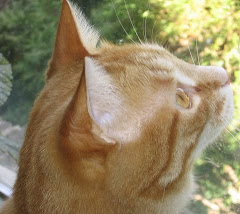


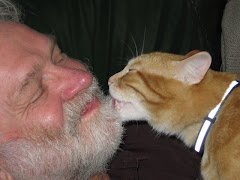

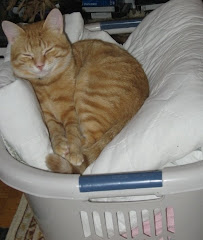





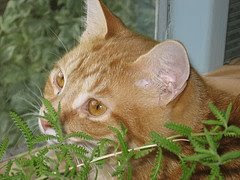

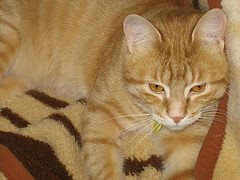


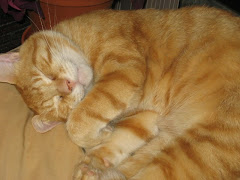
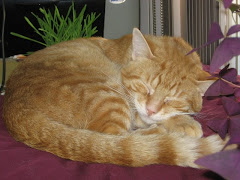
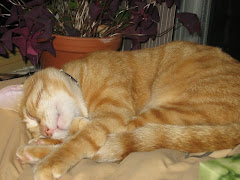


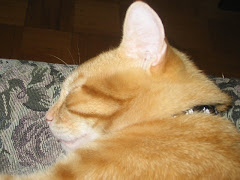



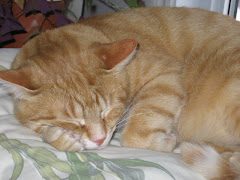


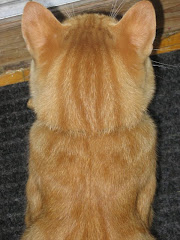
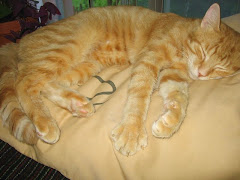
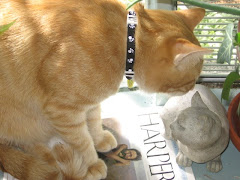

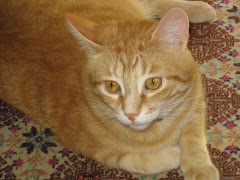


No comments:
Post a Comment